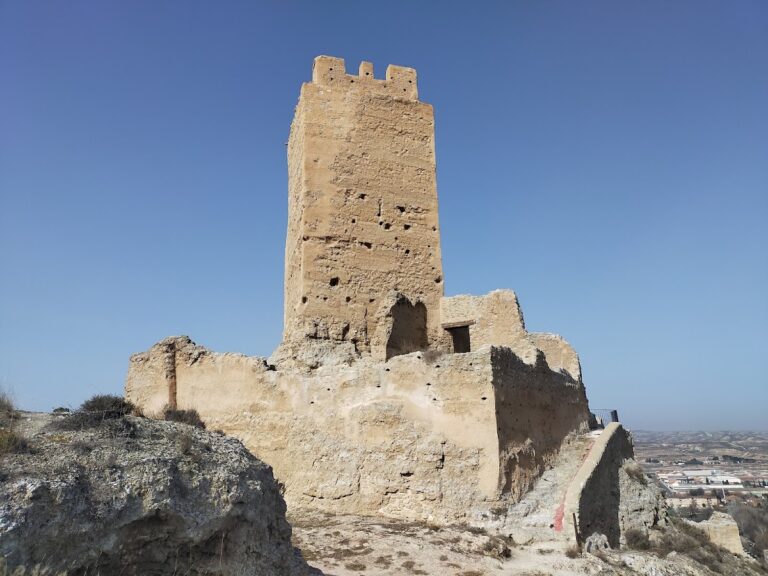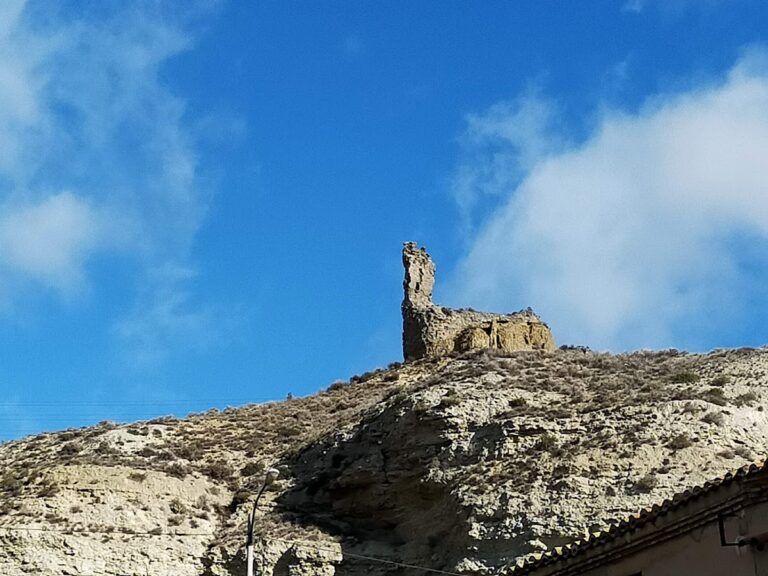Castle of Rueda de Jalón: A Medieval Fortress in Spain
Visitor Information
Google Rating: 4.2
Popularity: Very Low
Google Maps: View on Google Maps
Country: Spain
Civilization: Unclassified
Remains: Military
History
The Castle of Rueda de Jalón is situated in the municipality of Rueda de Jalón, Spain. This medieval fortress occupies a strategic position that reflects its long history of military and political significance, primarily shaped by the Islamic and Christian kingdoms of the Iberian Peninsula.
Originally known as Rota or Rotalyeu during its early history, the site came under the control of the Banu Qasi, a Muslim dynasty, when they captured it from Zaragoza in 882. During the mid-10th century, in 935, it faced a siege by Durrí, a general serving the caliph Abderramán III, while under the governance of Tuchibí, who was part of the Taifa kingdom of Zaragoza. This period highlights the fortress’s importance within the shifting power dynamics among Muslim rulers.
In the late 11th century, the fortress was defended by Al-Mustaín, its alcaide or fortress commander, when Alfonso VI of León attempted to capture it in 1083. This siege was unsuccessful, and soon after, control of the castle changed hands through negotiation rather than warfare. Amed-Saif-Dola, successor to the Banu Hud dynasty in Rueda, exchanged the fortress with Alfonso VII of León for land located in Toledo, marking an important transfer from Muslim to Christian rule.
Subsequently, the castle was definitively taken by Alfonso I of Aragón, indicating its integration into the expanding Christian realms of the Iberian Peninsula. During the latter half of the 12th century, figures such as Pedro Ortiz in 1165 and Ortún de Sotiu in 1178 served as tenentes or governors of the castle under the reign of Alfonso II of Aragón.
In 1228, Alfonso III of Aragón granted the fortress to the noble faction known as the Unión. Later in the 13th century, the castle gained political significance when Jaime II of Aragón entrusted it as a pledge to his fiancée, Isabel of Castile. Ownership shifted again by 1291 when Lope Ferrench de Luna, the seventh lord of the Luna family, took possession. The Luna family retained control until 1315.
Ownership continued to evolve in the following century. In 1391, King Juan I of Aragón sold the castle to Ramón de Perelló. Two years later, it was acquired by the lord of Épila, who incorporated it into his estates, which would eventually be elevated to the viscountcy of Rueda. These successive transfers reflect the castle’s persistent role as a valuable hereditary and strategic asset in medieval Aragonese nobility.
Remains
The Castle of Rueda de Jalón presents a large triangular layout positioned on a rocky spur that is naturally inaccessible on two sides. Access to the fortress was originally made through a gate on the third side, though this entrance no longer survives. The enclosed space is organized into three stepped terraces, each serving distinct purposes within the fortress complex.
At the highest terrace stands a tower whose upper section and original entrance have been lost over time. This tower likely served defensive functions but exists today as a partial ruin. The middle level contains a surviving stretch of wall with foundational remains indicating several rectangular rooms, alongside sections of walls made using the tapial technique—a method that involves rammed earth construction. This area probably constituted residential quarters or administrative spaces during the castle’s occupation.
The lowest terrace, the most expansive and flattest portion of the enclosure, offers minimal visible remains, suggesting that much of its original structure has succumbed to decay. However, an important feature of the castle is a crenellated wall segment that remains connected to a square albarrana tower. An albarrana tower is a detached or semi-detached defensive tower typically positioned to guard the entrance or vulnerable points of fortifications. This particular tower includes a door and windows fashioned in the caliphal style, reflecting architectural elements from the period of Muslim rule.
Within the castle’s enclosure lies a subterranean cistern, known locally as an aljibe, accessed by stairs carved directly into the bedrock. The aljibe would have been essential for collecting and storing rainwater, enabling inhabitants to withstand sieges and droughts. In addition, the site still features two elegant square towers constructed through the tapial technique on the summit of the rocky outcrop.
Despite its current ruinous condition, the castle retains significant structural components that convey its original form as a formidable defensive complex. Its ensemble of walls and towers stands as an important example of medieval military architecture, combining Muslim and Christian design influences. The castle’s fragile state has led to its listing among Spain’s most endangered heritage sites.







